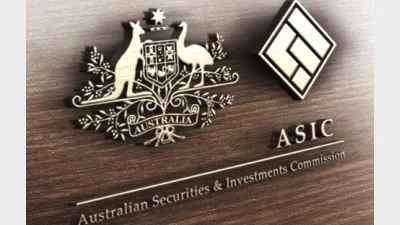Gaining the right global view



International equities have helped drive the double-digit investment returns recorded by many superannuation funds over the past financial year but, as Damon Taylor reports, the key element has been getting the right intelligence on the global economy and making the right assessments.
As the Australian superannuation industry continues to develop, it seems investment and asset allocation are two of the few constants remaining for leadership teams.
Beyond legislative reform, beyond regulatory requirement is the need to generate returns and for Innes McKeand, Head of Equities for AustralianSuper, getting an accurate picture of global equities markets is currently a key part of that.
“So the two things global equities investors have been watching carefully in recent years is economic movement in Europe and the United States,” he said. “And I think we can probably expect that to continue.”
“Equity markets are rising steadily and economic growth is improving without catching fire in the US,” McKeand continued. “So generally speaking, what we’re seeing is slow but steady progress in those two main economies.”
Yet for McKeand, as reassuring as such progress was, it was not nearly as important as the fact that monetary policy was likely to remain easy.
“It will be a while yet before interest rates start to go up in the US and they’ve just come up again recently in Europe,” he said. “But that’s key because its monetary policy that’s been driving those markets over the last few years.”
However for Tim Ridley, Investment Strategy Manager for Cbus, one of the main issues for investors is pinpointing where the US currently is within its investment cycle.
“The key judgment to make is whether its mid-cycle or late-cycle,” he said. “And when we look at the evidence, it suggests that it’s probably still in a mid-cycle phase but that it might move into a late-cycle phase at some point in the next two to three years.”
“And for us, that is largely predicated on two things,” Ridley explained. “Firstly, US inflation seems to be well under control at this point in time.”
“We’re watching it closely for signs that its moving higher but, for the moment, we don’t see it as a major concern and, in that context, the Fed (the US Federal Reserve Bank) is able to maintain relatively easy monetary policy.”
For Ridley, the second judgment investors had to make was around valuations.
“When we look at the US equity market, it seems to be moderately expensive,” he said. “And often towards the end of a cycle, you get more expensive valuations than we have today.”
“So when we consider those two aspects together, we’re most likely in the mid-cycle at this stage, with a possibility of moving to the late-cycle at some stage in the next two to three years.”
Shifting his view to Europe, Ridley said that the region still seemed to be struggling when it came to economic growth.
“It could even be that there’s another crisis at some point,” he said. “Obviously we’re not predicting that as we’ve seen is the ECB (European Central Bank) introducing new policy measures in the last few weeks, potentially moving down the path of quantitative easing, which would be a positive for markets.”
“But with growth likely to be around one per cent for quite a while, we generally see Europe as being a pretty lackluster performer in the global sphere.”
Bringing the discussion back closer to home, McKeand said that while the Chinese market was always important to Australian investors, it was also an example of where AustralianSuper was trying to be a bit more cautious with respect to emerging markets more generally.
“It feels to us like policy in China is going to remain relatively tight for a little while,” he said. “They’ve had a lot of growth and blending in the market and in the economy over the last five or six years, not so much at the absolute level, but the rate of growth that’s taking place there is still quite significant.”
“But that’s at the front of the agenda for the authorities over there so we expect growth to be gradually trending down over time and for policy in the near term to remain tight,” McKeand continued. “And in the meantime, the relatively modest recovery that’s been taking place in developed markets means that the export picture for China and other emerging markets is a bit less exciting than it would have been in previous cycles.”
Similarly, Ridley said that the outlook for China was another key judgement to make.
“While we anticipate that China will be able to manage a material slowdown in credit growth, there is a risk that won’t be the case,” he said. “We are watching developments in China closely.”
Offering a slightly more positive assessment, Matt Olsen, Chief Investment Officer for the Energy Industries Superannuation Scheme (EISS), said that the growth story in China seemed reasonably solid.
“That said, their fixed asset investment, which is something we look at closely, has fallen from a very high level of growth,” he said. “At one point, they were growing above 30 per cent per annum where they’re now growing below 20 per cent per annum.”
“So that growth rate is predicted to slow again but its now off a larger base,” continued Olsen. “So in the context of demand in volume terms for commodities, there’s still solid growth there.”
“We do monitor debt levels relative to GDP (gross domestic product) in China also and are aware of the risks, particularly in the property sector.”
Of course, irrespective of the economic growth or cycle being experienced in Europe, the US or China, such judgments are only half the global equities story. These judgments dictate asset allocation decisions and for McKeand, that currently meant an overweight allocation to developed market global equities.
“So we’re overweight developed markets at the moment and that’s for all of the reasons I’ve just mentioned,” he said. “In Europe and in the US, we think it’s going to be more of the same.”
“And I think as long as economic growth stays reasonably healthy, that view is going to hold,” continued McKeand. “If it starts to come in too quickly, then the Fed will probably start tightening policy and that’s when markets get nervous.”
“But for the moment, we see modest progress - nothing too exciting - but we see policy remaining easy, the market supporting that and so we’re constructive towards global equities.”
Explaining a similar perspective, Ridley said that Cbus currently held a moderate overweight to global equities but also to Australian equities.
“We’ve reduced that over the last two years but its been a pretty marginal reduction,” he said. “There was a material increase in valuations from mid-2012 through the 12 months after that and we consequently reduced our equity allocations slightly.”
“But when we look at valuations today for Australian equities, they seem to be around the fair value mark,” Ridley continued. “And while the US equity market seems to be moderately expensive, our views on international equities and Australian equities are quite similar, as international equities in aggregate are also around fair value.”
Yet in explaining Cbus’ moderate overweight to global and domestic equities, Ridley said that valuations were still key.
“If we look across the asset classes that we can invest in, what we see is valuations either in the fair value or expensive range,” he said. “So I’d say it’s becoming harder to asset allocate in this environment versus say 2012.”
“When we look at the valuations in 2012, there were a number of asset classes which were cheap versus their fair value,” Ridley continued. “Today, we don’t see that.”
“The only asset class which is on the cheaper side that we typically invest in is emerging market equities and we recently increased our allocation to that sector on that basis.”
For his part, Olsen said that what EISS was looking for, at all times, was balancing a tactical asset allocation view against a strategic asset allocation view.
“We probably prefer global exposure in terms of equities at the moment but what we’re always trying to evaluate is the expected return, the risk that comes with that expected return and then expected returns in different asset classes relative to each other,” he said. “So whilst some equity markets might look slightly expensive in the developed world, we’re seeing low returns in other asset classes and we’re seeing emerging markets as possibly cheaper than developed.”
“But is it actually cheaper for a reason?” Olsen asked. “They’re the things we’re grappling with and it’s always trying to balance that tactical view with a more holistic, longer term view.”
Of course, the challenge for superannuation investment executives is not just balancing tactical and strategic considerations but also having sufficient insight to be discerning when it comes to global equities.
And the reality, according to McKeand, is that it is at this point that a trusted fund manager must come into play.
“There are really two aspects to managing our global equities allocation,” he said. “One is based around an asset allocation call and the first thing I’d say is that we believe in doing our own research across the board.”
“Right now, we’ve got a rigorous research program across all asset classes,” McKeand continued. “We figure out for ourselves where we should be allocating money in the broad markets but the other element is stock selection.”
“We’ve built an internal Aussie equities capability, we’re trying to figure out how best to bring some of our global equities allocation in-house as well but despite that, I suspect that for some considerable time to come, the great bulk of equities, both domestic and international, will be managed by an external manager.”
According to McKeand, where a super fund was well armed with respect to internal research and analysis, a fund manager’s primary role was stock selection, providing that deeper level of detailed insight that was otherwise difficult to obtain.
“The reality is that we won’t ever be able to do everything ourselves but fundamentally, when we hire managers, their job is stock selection,” he said. “Given our internal capability in terms of research, analysis, insight, we know broadly where we should be allocating the money.”
“At the moment, stock selection is simply the missing piece.”
Describing a similar approach, Brett Chatfield, Investment Manager, Public Markets for Cbus, said that Cbus had a fully external manager program to manage equities on the fund’s behalf.
“So what we look for in managers is a strong investment team in terms of skills and experience and depth of expertise,” he said. “We spend a lot of time working with them, drilling down into their investment process and assessing just how robust and deep that process and its inputs are, and the extent to which the process is consistent with their investment philosophy and process.”
“We also place a reasonable emphasis on ESG (environmental, social and governance) factors and the extent to which they incorporate ESG into their assessment,” Chatfield continued. “Clearly, we also reflect on their track record in terms of the returns they’ve delivered over time and whether those returns are consistent with their investment philosophy and process.”
“In combining the managers, it’s an overall mix between top down considerations and bottom up selection of the most attractive managers - the top down considerations include making sure that we have a portfolio that is well diversified across different manager styles and approaches, and that the portfolio has an appropriate level of active risk.”
Going into greater detail as to exactly how fund managers were selected, Chatfield explained that Cbus had quite an intensive due diligence process.
“At Cbus, we have quite an intensive due diligence process when we are first selecting managers and then we have an ongoing process where we meet with all our managers at least quarterly and then on-site annually,” he said. “So it is a rigorous process and that’s in addition to leveraging the research provided by our asset consultant, Frontier Advisors.”
Similarly, Olsen said that when it came to fund manager selection, EISS was looking for skill and well-run teams.
“It ends up being a melting pot of different factors, to be honest,” he said. “In our global exposure, for example, we utilise MFS Investment Management out of Boston.”
“Now I’ve been over there and reviewed that fund manager in the past and they’ve got a very deep and experienced team of some 50 analysts submitting ideas to the portfolio management team,” Olsen continued. “But irrespective of what managers we may currently have on our books, we are constantly evaluating what type of manager performs well in different types of environments.”
“We want to evaluate a manager’s skill, the depth of their process and also the sorts of markets in which they’re likely to succeed - it’s all extremely important when it comes to manager selection.”
Ticking off similar factors in his own list of fund manager requirements, the only factor McKeand was quick to add into the mix was alignment.
“Do they have a good investment philosophy? Do they have a team which will give them an insight into markets? And do they have a disciplined process to harvest those insights?” he explained. “It’s all critical but the other key question is whether we can trust them.”
“And that comes down to getting a sense of alignment,” McKeand added. “Are they thinking about their fiduciary responsibilities? Are they investing for the long term and not seeking short term performance?”
“We are very much interested in long term performance so getting that sense of alignment is vital.”
Yet if finding the right fund manager is important within global equities, so too is finding the right investment approach. In both all equities investment, there is a constant interplay between active and passive but for Olsen, both approaches have merit.
“We have a combination of passive and active approaches within the fund,” he said. “Where we have an active manager, what we’re trying to extract from that active manager is an active return.”
“Indeed, the real value of that active return lies in the portion that is excess return over the index because that excess return component should have a low correlation with equity markets,” Olsen continued. “So whilst your index component will have a 100 per cent correlation, it’s that active component that gives you your portfolio diversification benefit.”
McKeand, on the other hand, said that AustralianSuper had a fundamental belief in active management.
“Yes, there’s a role for some elements of passive, particularly with respect to getting money into domestic markets efficiently, but our starting point is always active,” he said. “What we’re looking for is opportunities to add value over and above benchmark returns and we’ve got a solid track record of being able to do exactly that through choosing active managers.”
“So it’s not just index plus a little bit, it’s very much an active investment process.”
But whether Australian super funds favour emerging markets over developed or active investment over passive, it seems clear that global equities’ role within portfolios is becoming increasingly important.
Indeed the reality, according to McKeand, is that while most funds may currently have a bias towards their local market, that bias is almost certainly diminishing.
“I think as pension systems mature, the domestic bias tends to diminish over time,” he said. “I’ve seen it elsewhere and I’d say we’ll see it here as well - its just a question of when.”
“I think as the pool of superannuation savings grows, there will be some point where it outgrows domestic boundaries,” continued McKeand. “We’re clearly not there yet but I have no doubt that in 10 years time, the proportion of domestic bias will have diminished to a fair extent.”
“It’s inevitable but, as I say, the timing is hard to predict.”
Without saying that a change in focus was definitely on the cards, Ridley said that the arguments for increasing allocations globally were mounting.
“As it stands, we have a higher allocation to Australian equities than we do international equities in our long-term strategic asset allocation and there is undoubtedly an argument to consider the merits of a more even allocation,” he said. “But, by the same token, one of the main advantages in investing locally is the franking credit benefits that we get for Australian equities versus international equities.”
“You pit that against the greater diversification and greater opportunity set that you get internationally and it may be a more even proposition,” continued Ridley. “So that is one thing we will be examining over the next few years.”
“We’re not changing right now but we’re certainly looking at whether that change needs to be made in the future.”
However, as much as a home country bias has been a feature of Australian super fund investment, Olsen said funds should be evaluating their expected returns across all available markets.
“The biggest benefit of owning global equities is the diversification benefit you get from investing away from the Australian market,” he said. “If you see a low return environment domestically relative to overseas, then it can absolutely be advantageous to invest globally.”
“There is greater depth and breadth in global markets so you’re not as constrained to banks and resources,” Olsen explained. “The consumer staple sector, for example, which is often a very defensive way to be exposed to the share market, has a far broader range of opportunities in global funds there.”
“But the other factor to keep in mind is that funds may wish to have equities denominated in foreign currencies.”
Explaining further, Olsen said that many Australian super funds had a predisposition to hedging anywhere up to 50 per cent of their global exposure back into the Australian dollar.
“But where you have a tactical, negative view on the Australian dollar, the you could hold global managers on an unhedged basis and benefit from Australian dollar currency depreciation,” he said. “So that adds another dynamic - what exactly is your hedging policy when you hold global funds?”
“Similarly, if you were to say that Australian banks were expensive and you had a less bullish outlook for the China growth story, then the large majority of Australia indexes is probably going to look less attractive than some of the opportunities overseas,” Olsen continued. “So these are all the things that asset allocators have to think about.”
“And while there will always be a tendency towards a home country bias, I think funds need to be evaluating their expected returns globally and ensuring that if they are more attractive, they have the ability and willingness to go there.” SR
Recommended for you
The regulator has fined two super funds for misleading sustainability and investment claims, citing ongoing efforts to curb greenwashing across the sector.
Super funds have extended their winning streak, with balanced options rising 1.3 per cent in October amid broad market optimism.
Introducing a cooling off period in the process of switching super funds or moving money out of the sector could mitigate the potential loss to fraudulent behaviour, the outgoing ASIC Chair said.
Widespread member disengagement is having a detrimental impact on retirement confidence, AMP research has found.










